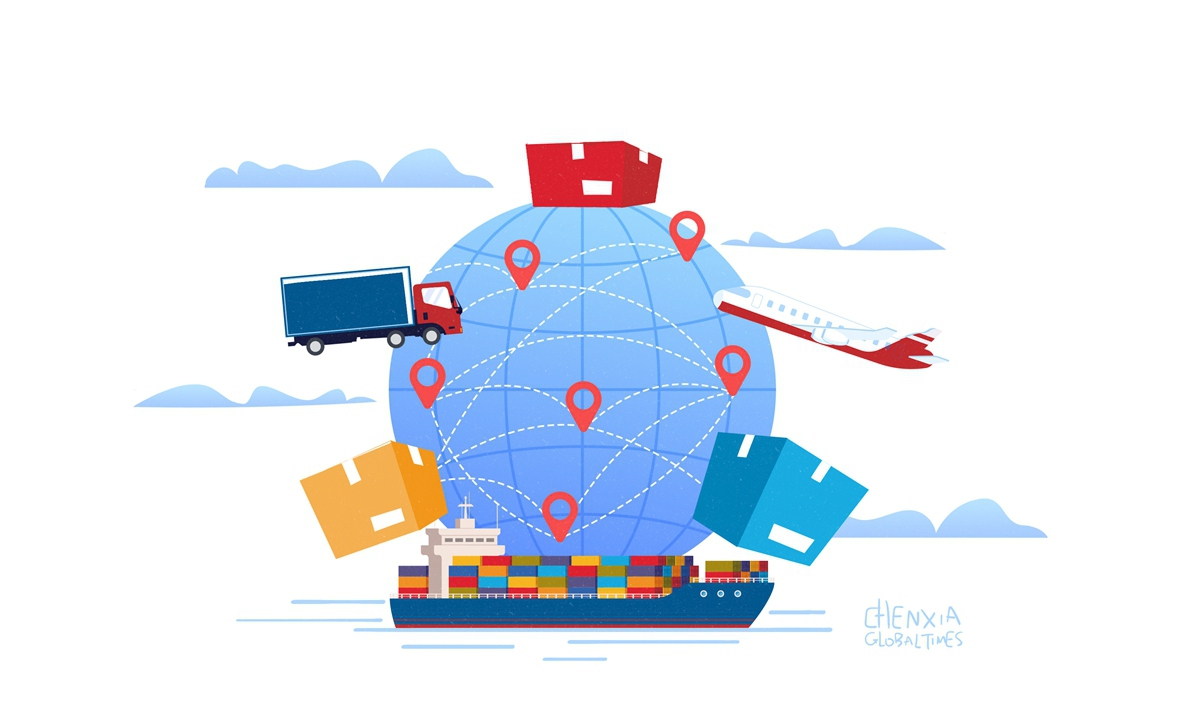
Illustration: Chen Xia/GT
Given the growing uncertainties in the global economic and trade landscape,
mk the urgency for China and ASEAN to deepen cooperation and leverage their market potential has never been greater.
In a speech on Monday, Malaysian Prime Minister Anwar Ibrahim said ASEAN's relationship with China needs to grow beyond traditional trade and investment and focus on preparing the region for future challenges, warning that artificial intelligence (AI) and fresh American tariffs threaten to upend the global economy, the South China Morning Post reported.
Anwar's warning underscores ASEAN's awareness of the shifting global landscape. As a critical node in the global supply chain, Southeast Asia faces significant risks from Washington's protectionist policies.
Moreover, the US containment strategy against China has led to increased scrutiny of Southeast Asia as a location for so-called roundabout ways for Chinese manufacturers to bypass US tariffs, according to media reports.
Furthermore, the rapid rise of AI presents both challenges and opportunities. While AI could displace millions of jobs by 2030, according to McKinsey, it also holds the potential to drive digital transformation. US consultancy Boston Consulting Group forecasts that the value of ASEAN's digital industries will increase to $1 trillion by 2030.
In this context, expanding and strengthening the China-ASEAN hyper-scale market is not just a strategic choice but a necessity for regional stability and growth. With a combined population of more than 2 billion and a rapidly upgrading consumer base, China and ASEAN possess unparalleled market resources. By deepening cooperation across multiple fronts, the two sides can transform these advantages into a resilient economic partnership capable of withstanding global shocks.
China's per capita consumption expenditure came in at 28,227 yuan in 2024, up 5.3 percent year-on-year in nominal terms. By 2030, when 70 percent of ASEAN's population is expected to have attained middle-class income levels, the consumer market could reach $4 trillion, an HSBC report said.
First, as Chinese consumers' incomes rise and consumption patterns evolve, the demand for high-quality products and services from ASEAN countries is surging. For instance, Malaysia's palm oil, Thailand's tropical fruits and Indonesia's textiles have already found strong footholds in the Chinese market. By further reducing trade barriers and enhancing market access, China can provide ASEAN exporters with even greater opportunities to tap into its growing domestic market.
Second, China can actively cooperate with ASEAN countries in areas such as investment, trade, connectivity, finance and people's livelihoods to help them unlock their full economic potential and expand the regional market. For example, in the field of infrastructure construction, Chinese enterprises can participate in transportation, energy and other infrastructure projects in ASEAN countries, improving the local investment environment and laying the foundation for industrial development.
In the manufacturing sector, China's technological expertise and capital can complement ASEAN's labor advantages. For example, Chinese investments in Vietnam's electronics and Thailand's automotive sectors have not only created jobs but have also facilitated technology transfers, enabling local industries to move up the value chain.
The digital economy is another area ripe for collaboration. China's expertise in AI, e-commerce and fintech can help ASEAN countries accelerate their digital transformations. Investment projects like Tencent's data centers in Indonesia and ByteDance's investments in an AI center in Malaysia are laying the groundwork for a thriving digital ecosystem.
Of course, to fully realize the potential of the China-ASEAN hyper-scale market, China and ASEAN both need to make full use of existing cooperation mechanisms. For instance, the Version 3.0 China-ASEAN Free Trade Area negotiations have reached a substantial conclusion, providing an institutional guarantee for the two sides to jointly build a hyper-scale market.
Meanwhile, the Regional Comprehensive Economic Partnership is another critical tool for enhancing regional cooperation between China and ASEAN, allowing both parties to deepen their integration in areas such as industrial and supply chains. Such bilateral openness lowers operating costs for businesses while broadening market opportunities within the region.
In addition, strengthening communication and cooperation in the financial and monetary fields is crucial for both sides. In cross-border investment and trade, both sides can enhance currency swap cooperation to reduce exchange rate fluctuation risks and promote the stable development of trade and investment.

